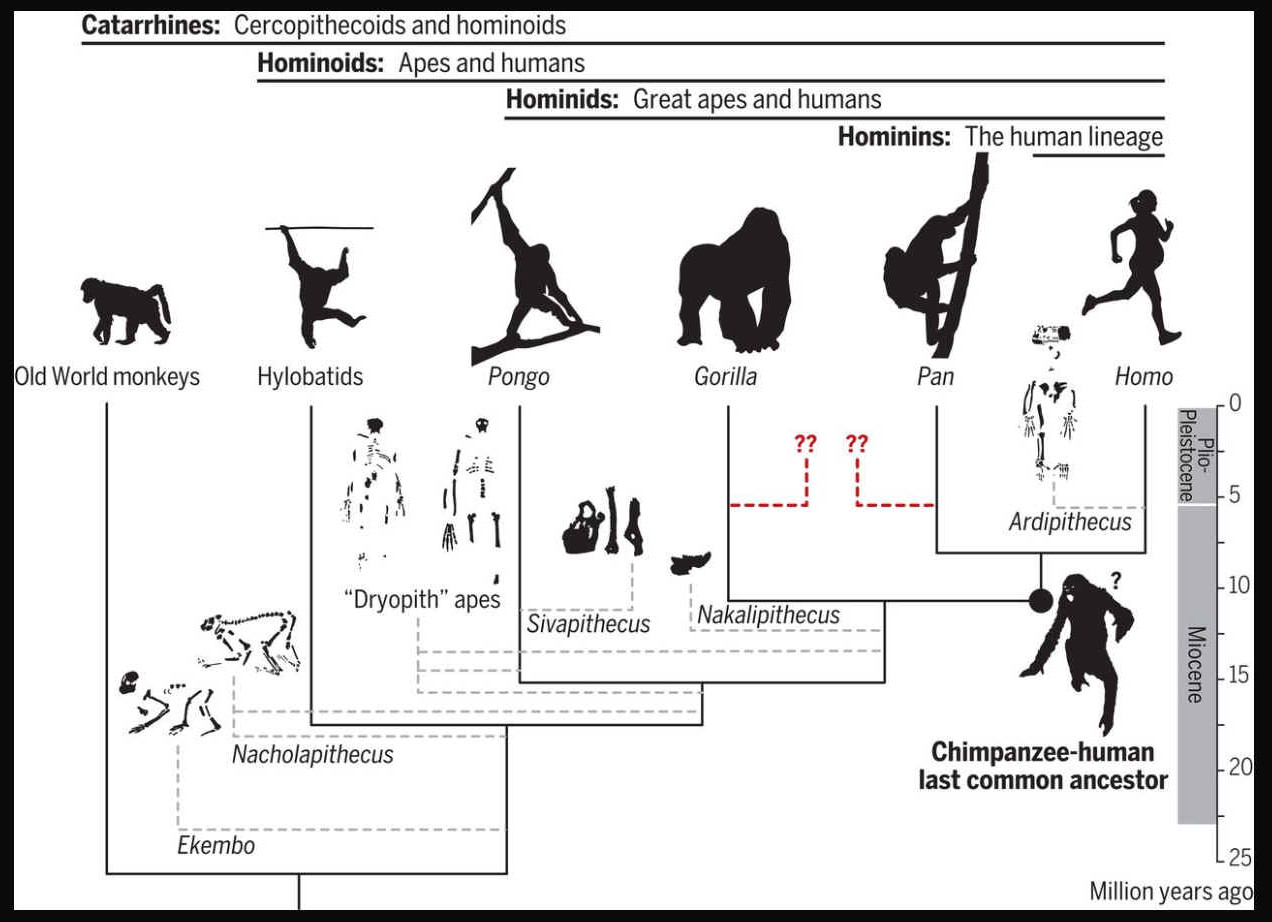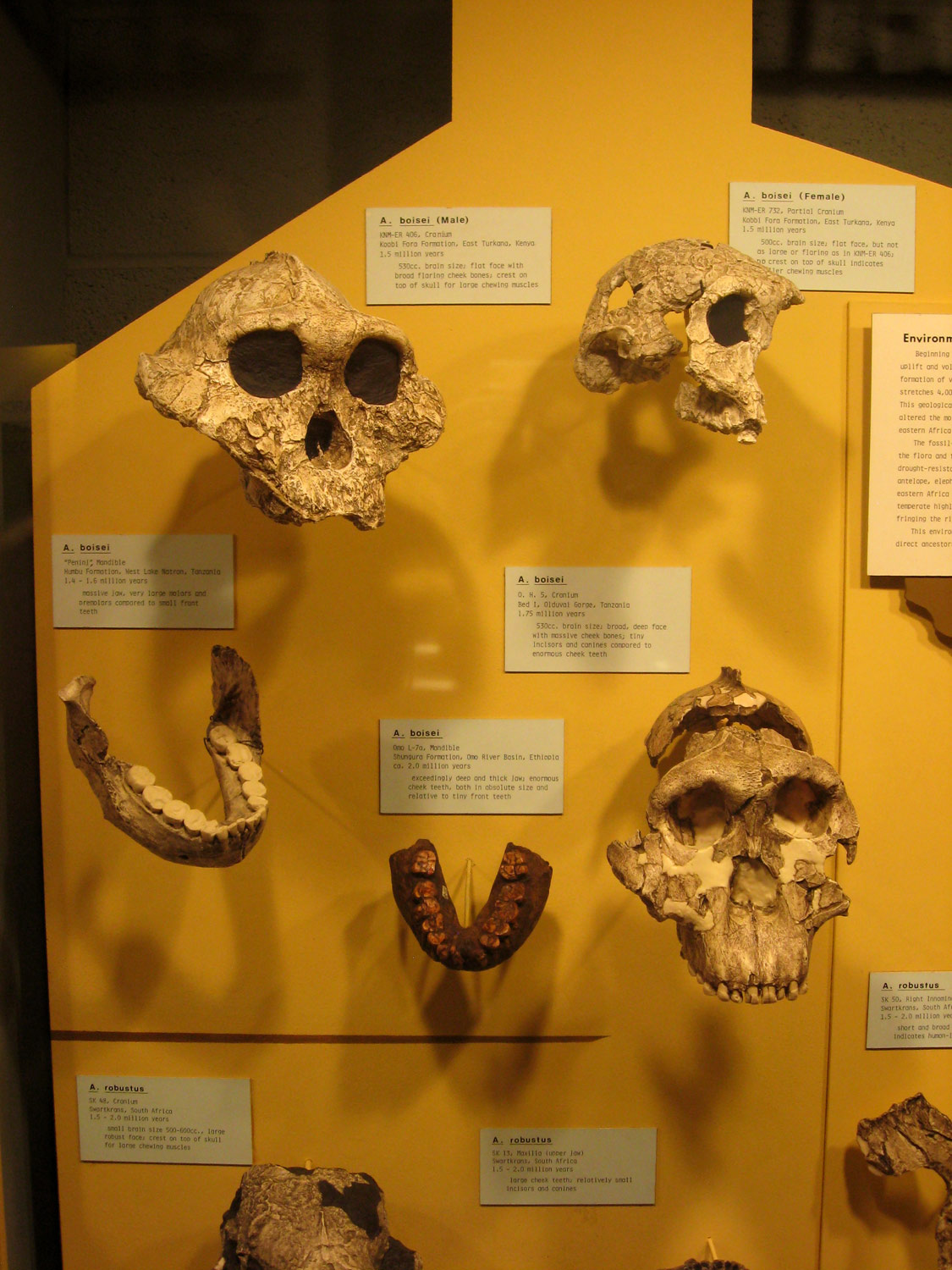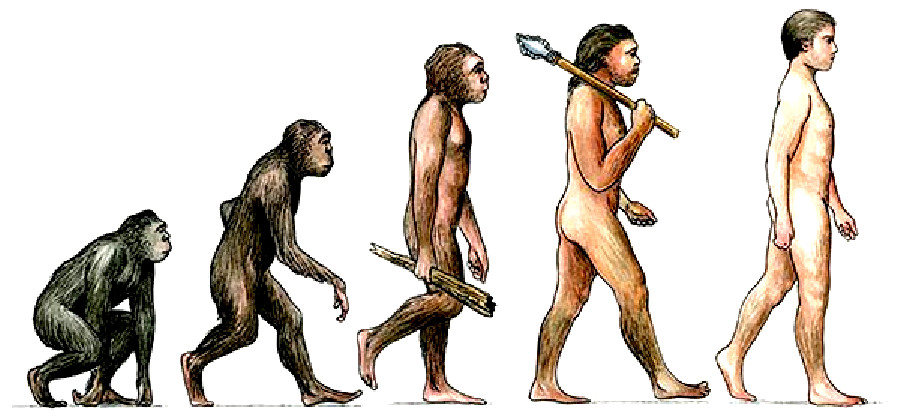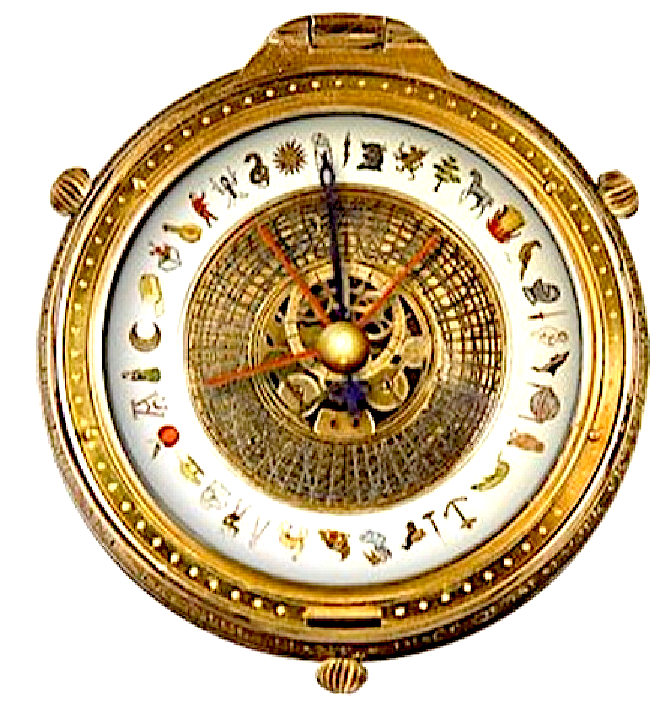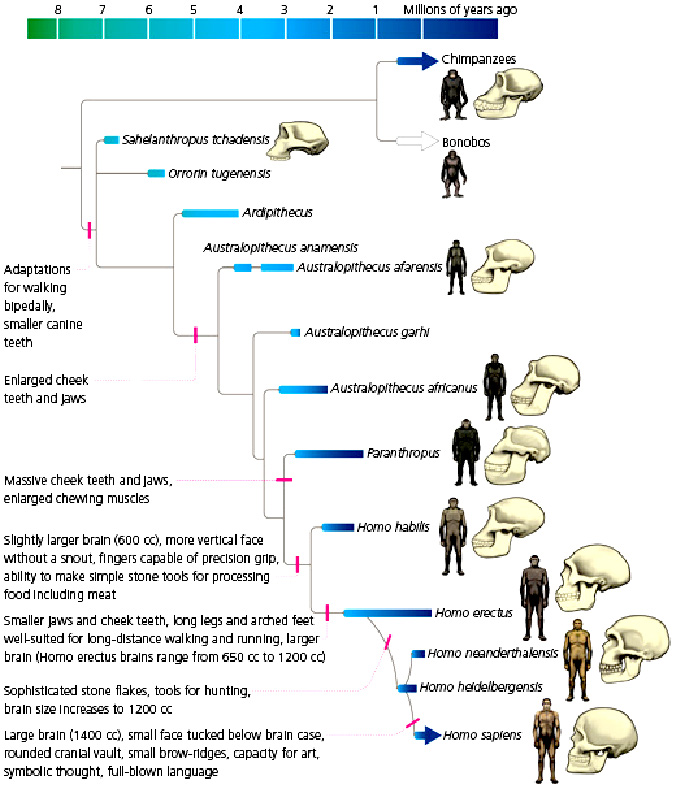|
AUSTRALOPITHECUS AFRICANUS
|
|
|
|
|
How
we got here, and where we are going. Ever since the writings of Darwin and Huxley,
humans’ place in nature relative to apes (nonhuman hominoids) and the geographic origins of the human lineage (hominins) have been heavily debated. Humans diverged from apes [specifically, the chimpanzee lineage (Pan)] at some point between ~9.3 million and ~6.5 million years ago (Ma), and habitual bipedalism evolved early in hominins (accompanied by enhanced manipulation and, later on, cognition). To understand the selective pressures surrounding hominin origins, it is necessary to reconstruct the morphology, behavior, and environment of the Pan-Homo last common ancestor (LCA). “Top-down” approaches have relied on living apes (especially chimpanzees) to reconstruct hominin origins. However, “bottom-up” perspectives from the fossil record suggest that modern hominoids represent a decimated and biased sample of a larger ancient radiation and present alternative possibilities for the morphology and geography of the Pan-Homo LCA. Reconciling these two views remains at the core of the human origins problem.
Australopithecus africanus is an extinct species of australopithecine which lived between about 3.3 and 2.1 million years ago in the Late Pliocene to Early Pleistocene of South Africa. The species has been recovered from Taung, Sterkfontein, Makapansgat, and Gladysvale. The first specimen, the Taung child, was described by anatomist Raymond Dart in 1924, and was the first early hominin found. However, its closer relations to humans than to other apes would not become widely accepted until the middle of the century because most had believed humans evolved outside of Africa. It is unclear how A. africanus relates to other hominins, being variously placed as ancestral to Homo and Paranthropus, to just Paranthropus, or to just Paranthropus robustus. The specimen "Little Foot" is the most completely preserved early hominin, with 90% of the skeleton intact, and the oldest South African australopith. However, it is controversially suggested that it and similar specimens be split off into "Australopithecus prometheus".
Australopithecus
africanus' brain volume was about 420–510 cc (26–31 cu in). Like other early hominins, the cheek teeth were enlarged and had thick enamel. Male skulls may have been more robust than female skulls. Males may have been on average 140 cm (4 ft 7 in) in height and 40 kg (88 lb) in weight, and females 125 cm (4 ft 1 in) and 30 kg (66 lb). A. africanus was a competent biped, albeit less efficient at walking than humans. A. africanus also had several upper body traits in common with arboreal non-human apes. This is variously interpreted as either evidence of a partially or fully arboreal lifestyle, or as a non-functional vestige from a more apelike ancestor. The upper body of A. africanus is more apelike than that of the East African A. afarensis.
KANIS REX (HOMO SAPIENS SUPERIOR)
Man took millions of years to develop from the apes, into Homo Sapiens Sapiens, king of the primates until John Storm was accidentally injected with a CRISPR virus developed by Brazilian scientists working for the secret society; NeuWelt Rittertum. The amateur anthropologist was later forced to undo damaging alterations to his DNA, in so doing creating a new species, physically and mentally superior to Homo S. Sapiens; named Homo Sapiens Superior, or Kanis Rex. These modifications were sufficient in scope to place him well and truly in a new class. Progressing from Homo Sapiens Sapiens, to become the king of men genetically.
The modifications, only possible with the CyberCore Genetica™ super computer, combined with the BioCore™ brain implant - and Hal's AI, were not just to his mental and muscular capabilities, but also to his physical frame; his skeleton. Which is now stronger and lighter. All of which in the natural world, would have taken a million or so years to have achieved, assuming there would have been a clear natural selection advantage.
Sahelanthropus Homo sapiens Homo Sapiens Superior (Kanis Rex)
EVOLUTION
The "out of Africa" migration took place in at least two waves, the first around 130,000 to 100,000 years ago, the second (Southern Dispersal) around 70,000 to 50,000 years ago. H. sapiens proceeded to colonize all the continents and larger islands, arriving in Eurasia 125,000 years ago, Australia around 65,000 years ago, the Americas around 15,000 years ago, and remote islands such as Hawaii, Easter Island, Madagascar, and New Zealand between the years 300 and 1280 CE.
The Cup of Christ is the Holy Grail, that has never been found, in all searches through the ages.
|
|
|
|
|
|
Please use our GOLDEN COMPASS to examine the facts, or retrace your path HOME and begin afresh
This website is Copyright © 2023 Cleaner Ocean Foundation and Jameson Hunter Ltd.
|
